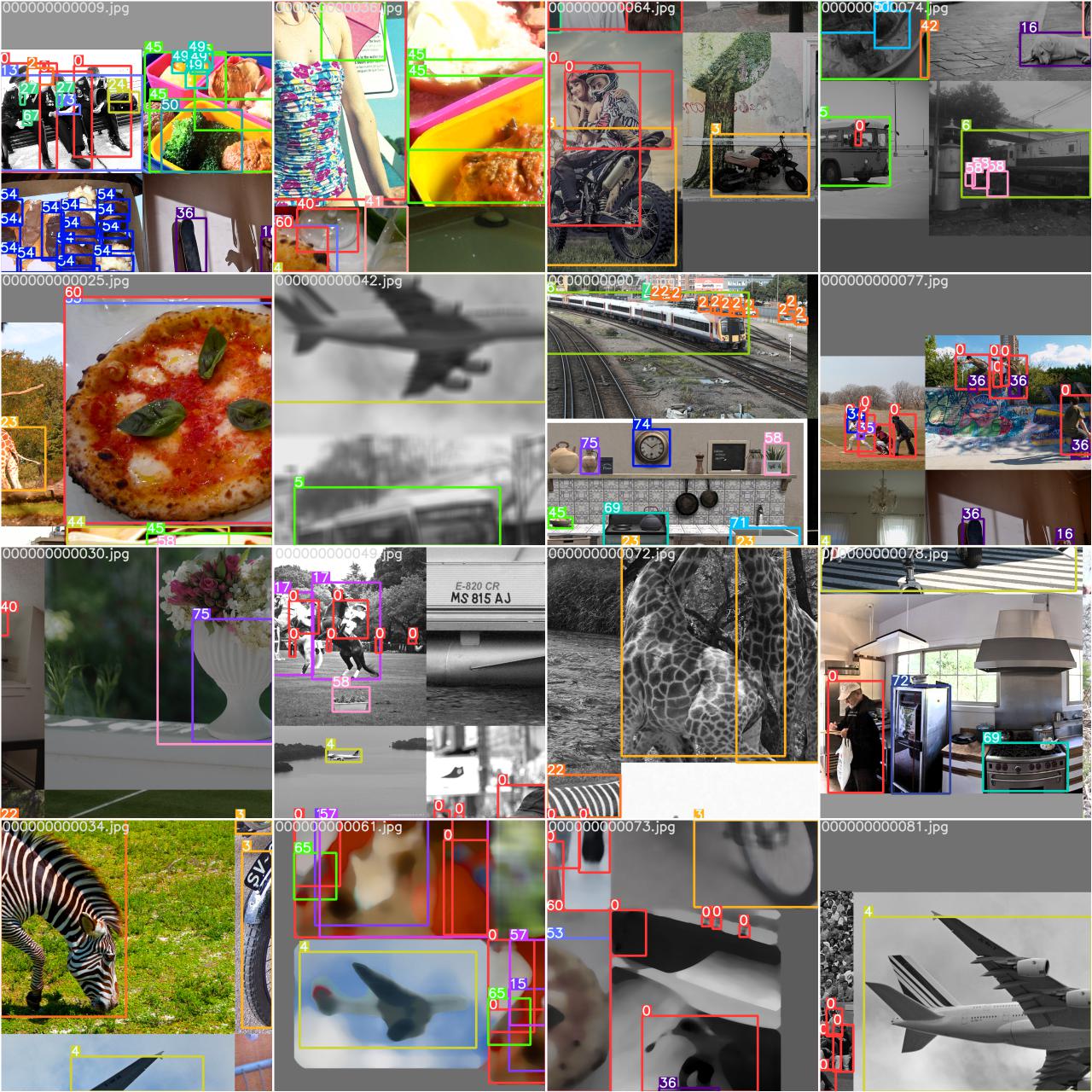-
-
Notifications
You must be signed in to change notification settings - Fork 16.4k
New issue
Have a question about this project? Sign up for a free GitHub account to open an issue and contact its maintainers and the community.
By clicking “Sign up for GitHub”, you agree to our terms of service and privacy statement. We’ll occasionally send you account related emails.
Already on GitHub? Sign in to your account
varying Scale of objects in detection #9020
Comments
|
@Akhp888 👋 Hello! Thanks for asking about image augmentation. YOLOv5 🚀 applies online imagespace and colorspace augmentations in the trainloader (but not the val_loader) to present a new and unique augmented Mosaic (original image + 3 random images) each time an image is loaded for training. Images are never presented twice in the same way. Augmentation HyperparametersThe hyperparameters used to define these augmentations are in your hyperparameter file (default yolov5/data/hyps/hyp.scratch-low.yaml Lines 6 to 34 in b94b59e
Augmentation PreviewsYou can view the effect of your augmentation policy in your train_batch*.jpg images once training starts. These images will be in your train logging directory, typically
YOLOv5 Albumentations IntegrationYOLOv5 🚀 is now fully integrated with Albumentations, a popular open-source image augmentation package. Now you can train the world's best Vision AI models even better with custom Albumentations 😃! PR #3882 implements this integration, which will automatically apply Albumentations transforms during YOLOv5 training if Example Good luck 🍀 and let us know if you have any other questions! |
|
@glenn-jocher Thanks , so enabling Mosaic in hyperparameters adds objects of varying sizes ? Then i am curious to know what the "scale" does ? |
|
https://medium.com/augmented-startups/how-hyperparameters-of-yolov5-works-ec4d25f311a2 These are the biggest ones |
|
👋 Hello, this issue has been automatically marked as stale because it has not had recent activity. Please note it will be closed if no further activity occurs. Access additional YOLOv5 🚀 resources:
Access additional Ultralytics ⚡ resources:
Feel free to inform us of any other issues you discover or feature requests that come to mind in the future. Pull Requests (PRs) are also always welcomed! Thank you for your contributions to YOLOv5 🚀 and Vision AI ⭐! |
|
@MartinPedersenpp thanks for sharing the link! The article seems to be a helpful resource for understanding YOLOv5 hyperparameters. As for your question about the "scale" hyperparameter, it controls the jitter of the image and grid sizes during training to allow some variation in object sizes and positions. You might tweak the scale for datasets with widely varying object sizes to permit better model understanding. For all hyperparameters, including their functionality, you can refer to the official Ultralytics YOLOv5 documentation https://docs.ultralytics.com/yolov5/training-hyperrparameters. It comprehensively explains each hyperparameter and their effects during training. Please let me know if you have any other questions or need further assistance! |




Search before asking
Question
Hello ,
My dataset has objects ranging from very tiny to 50X bigger , I see that the hyperparameter config file has a parameter "scale" .
would like to know if playing around with it would yield me better results ?
Note : I tried with default 0.5 and there are quite a lot of objects in FN .
Thanks
Additional
No response
The text was updated successfully, but these errors were encountered: